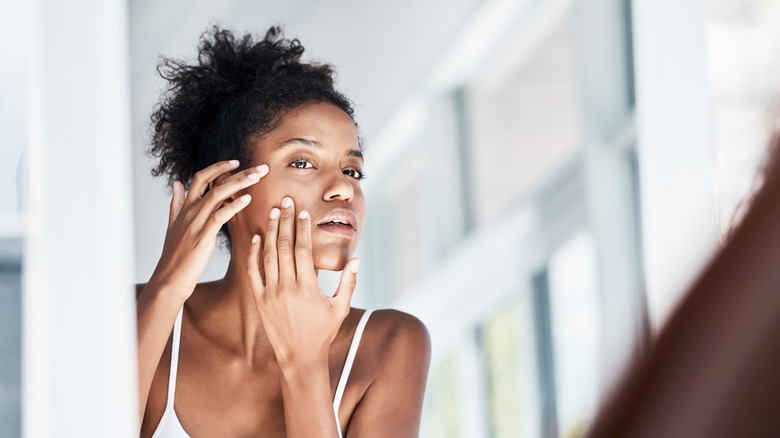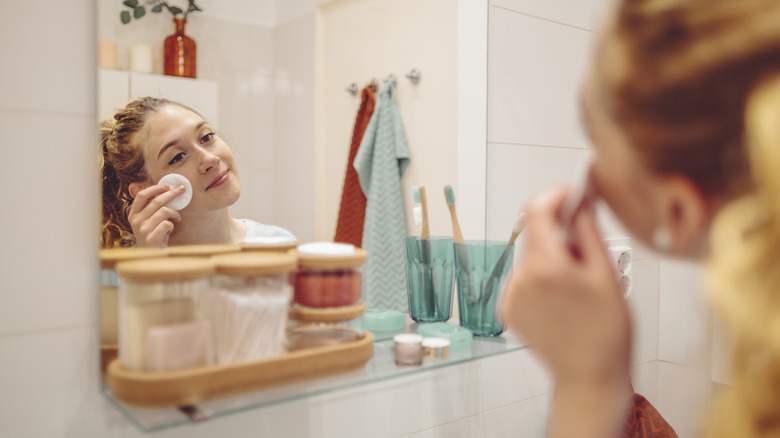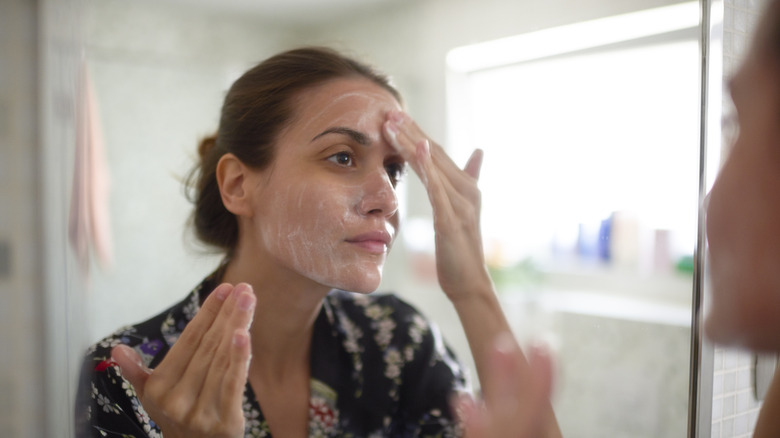The Proper Way To Remove Whiteheads
We may receive a commission on purchases made from links.
We all know the feeling of waking up and being greeted by a glaring whitehead in the mirror. The first urge is to pop it immediately, but it's vital that we do so properly and safely, so we don't make our skin worse. Skincare experts at Medical News Today define whiteheads as a type of acne that produces a visible white bump under the skin. They're typically found on the face, chest, back, neck, and shoulders. Among other common acne triggers, whiteheads are caused by excess oil and bacteria on the skin that clog the pores and cause inflammation. When the clogged pore begins to close, that's when a whitehead forms, leaving a raised, white bump of gunk.
Most dermatologists will advise against popping pimples and instead suggest using topical treatments to get rid of them. But let's be honest — most of us are still going to pop our pimples anyway, so we might as well know how to do it safely and correctly. Before you go on a popping spree, there are a few things to remember.
Use an extractor or cotton pad to pop whiteheads
Though it's tempting to use your fingers, it's best to pop whiteheads with an acne extraction tool, cotton pads, or swabs. Using your fingers runs the risk of transferring more oil, dirt, and bacteria onto your skin, making the problem worse. Clean the area and apply a warm compress to open the pores for easier extraction. With your extractor tool, center the loop around the whitehead, apply gentle pressure, and press down. Avoid dragging the tool downward, as this can bring more dirt into the pore. No matter how much the whitehead is bothering you, try not to press too hard. If nothing comes out, the whitehead is not ready to be popped yet. Dermatologist Dr. Sheila Farhang tells Shape, "I usually say follow a two-try rule — if you've done it twice and it doesn't open then it's not ready. Pushing too hard, forcing it, or seeing blood is where we get into problems of it getting more inflamed or lead to scarring."
After popping, clean the area and let it be. Dermatologist Dr. Mona Gohara recommends placing a hydrocolloid pimple patch over the whitehead after popping it, as "...this helps to speed up wound healing, bring down any inflammation, and protect the area so you can't touch it anymore," she explains via Well+Good. It's also important to clean your extractor tool before and after each use to prevent the spread of bacteria.
How to prevent whitehead breakouts
If you're someone with acne-prone skin, it's good to have an arsenal of skincare weapons to help you fight back. Salicylic acid and benzoyl peroxide are two of the most effective ingredients to prevent acne, per the American Academy of Dermatology. You can find these ingredients in many cleansers and serums. Benzoyl peroxide helps to target bacteria and dead skin cells that cause whiteheads, though it can be irritating for people with sensitive skin. PanOxyl and Differin are popular cleansers with benzoyl peroxide as the active ingredient. Salicylic acid is less drying and helps remove excess oil and unclog pores. CeraVe and Murad are great options for salicylic acid facial cleansers.
Retinol is another effective acne-fighting ingredient, which is a form of vitamin A that exfoliates the skin to remove dirt and oils. Paula's Choice 1% Retinol Treatment and CeraVe's Retinol Serum are both popular retinol options. You can apply the retinol after cleansing your face, and then finish up with your favorite moisturizer. Create a consistent skincare routine so that you're no longer at war with your skin.


